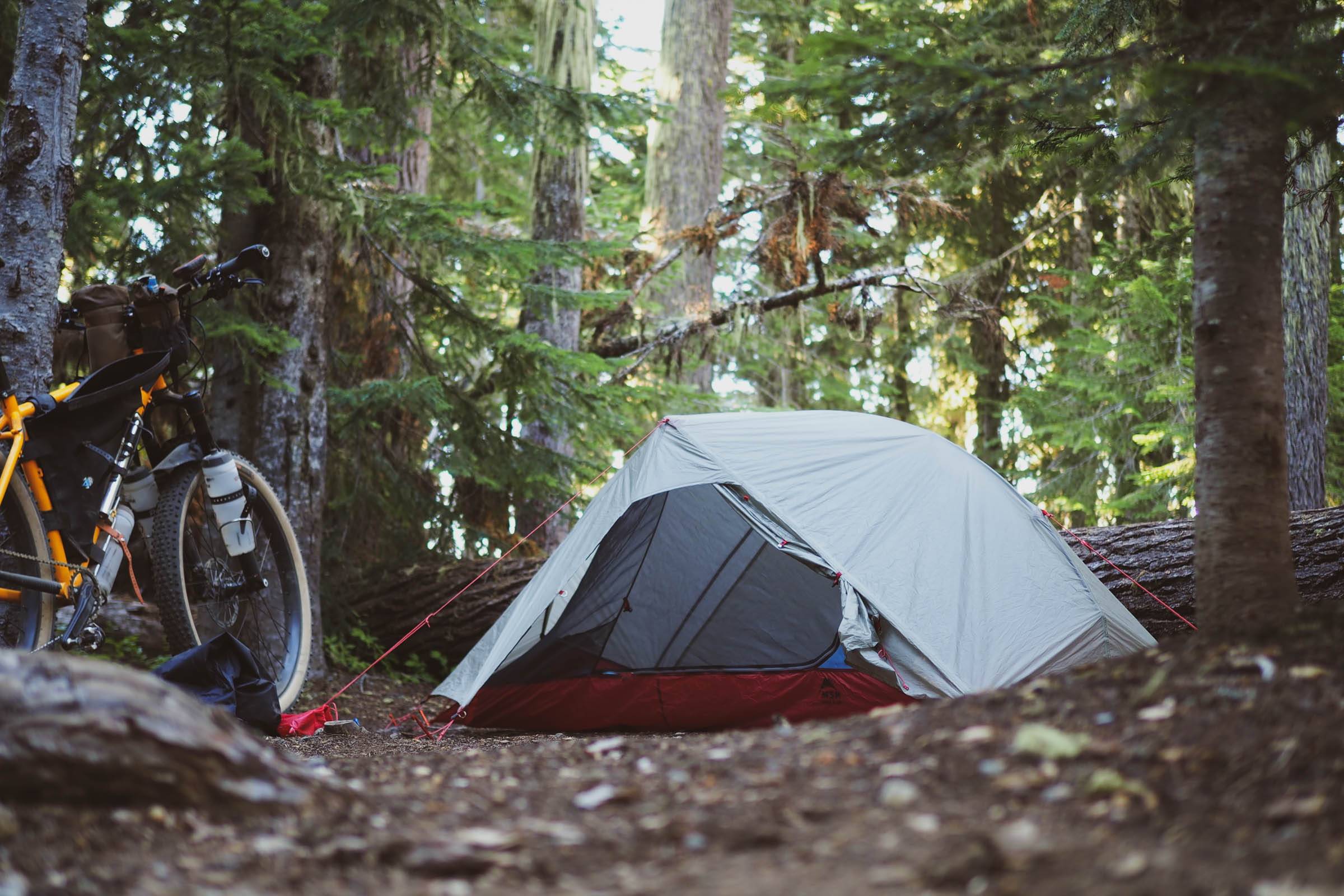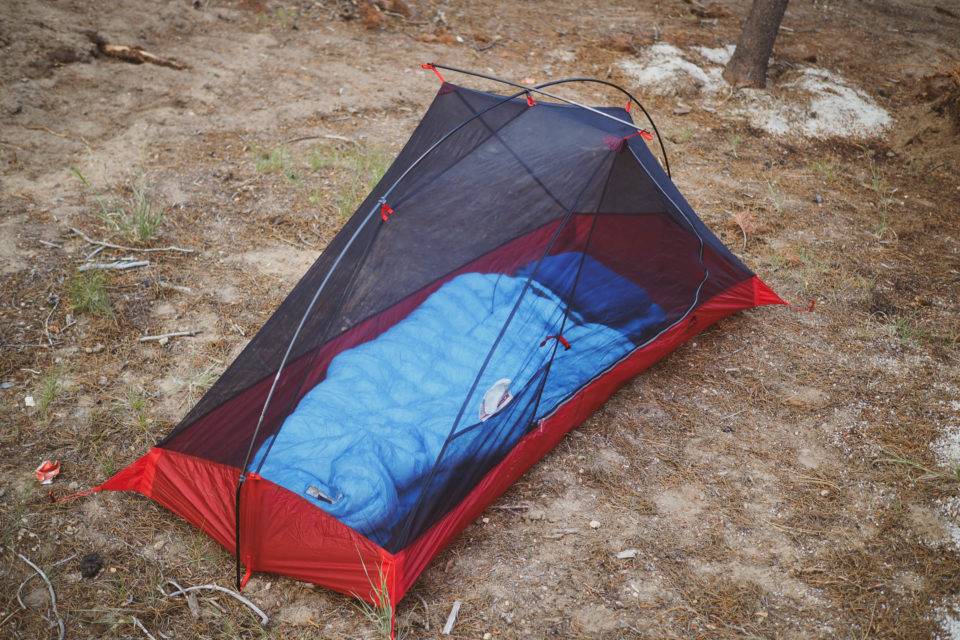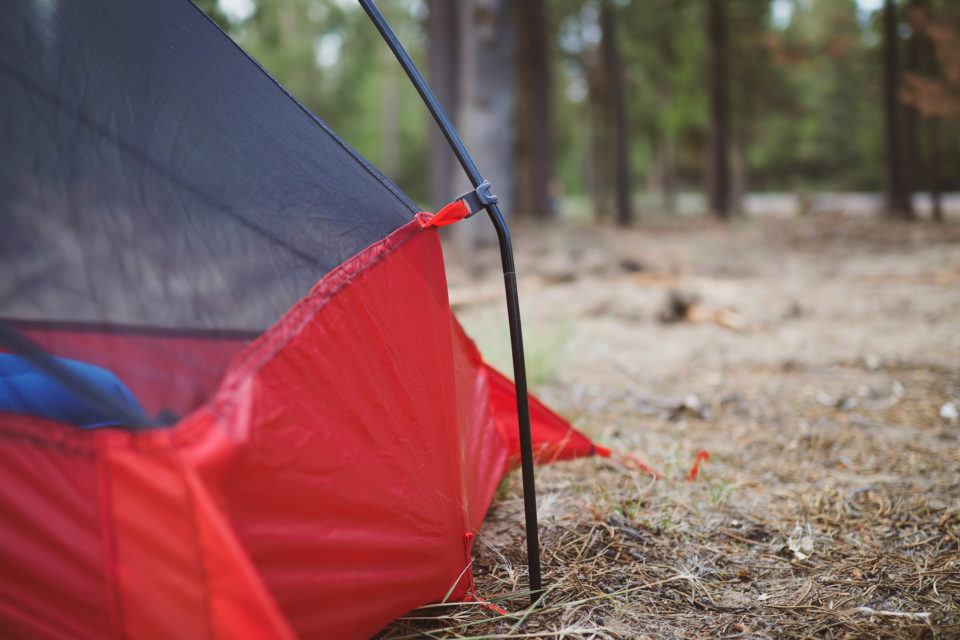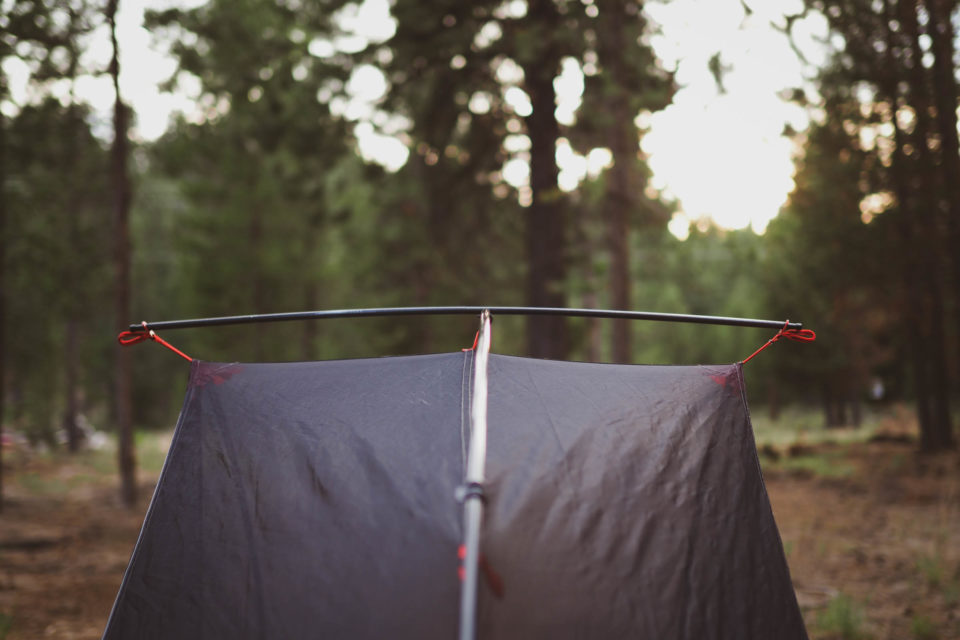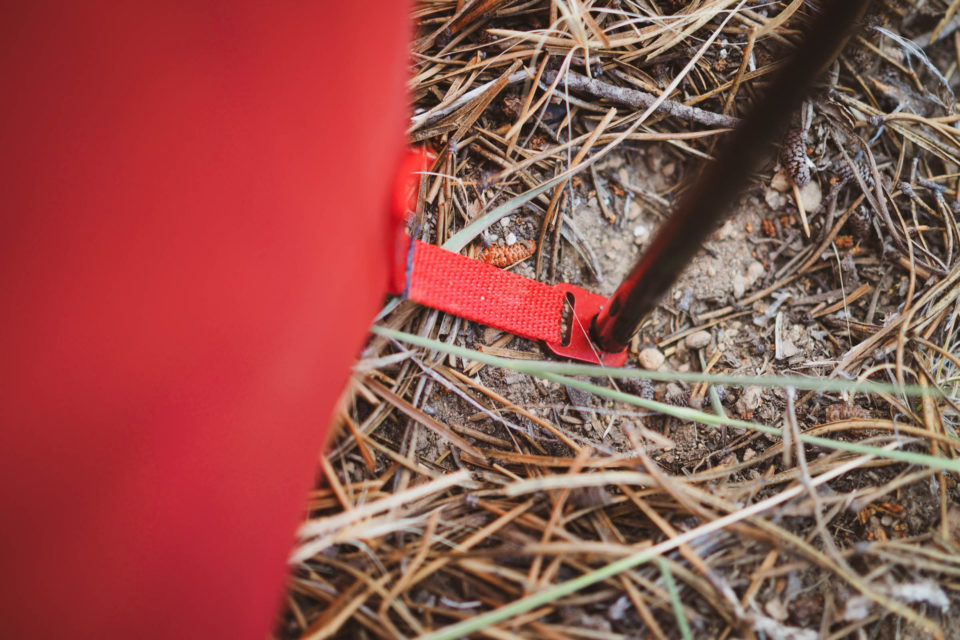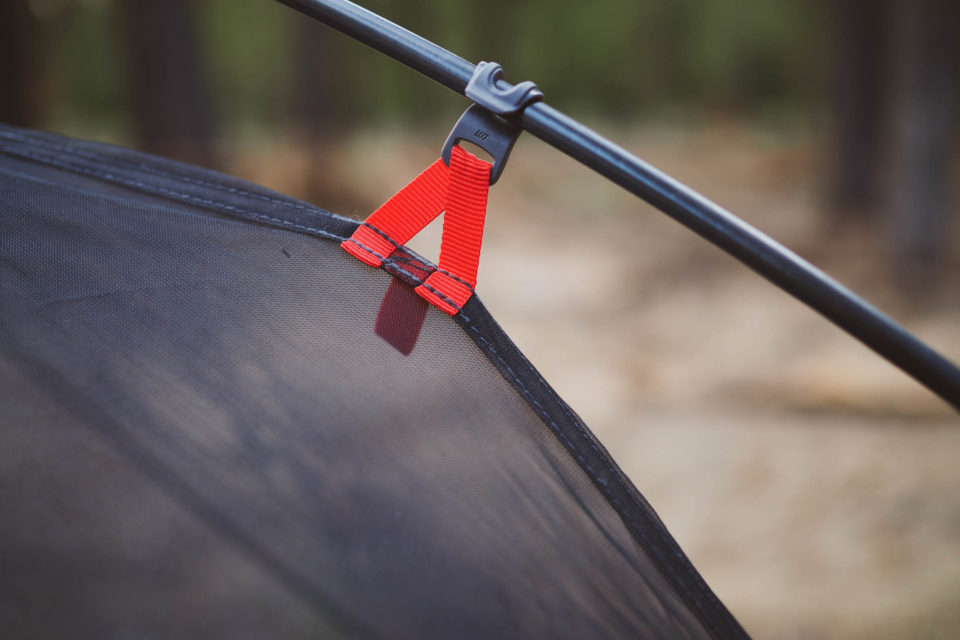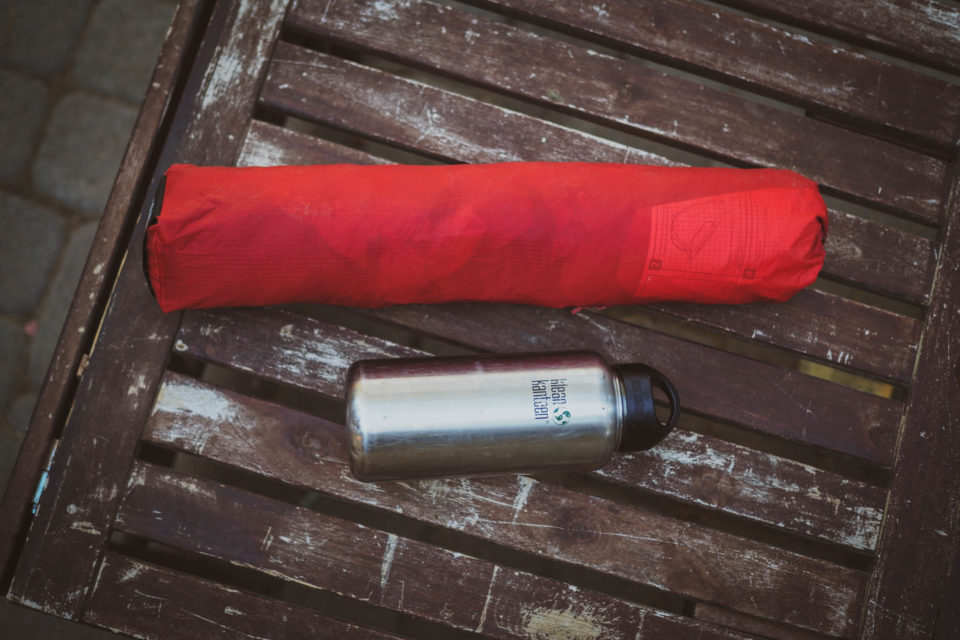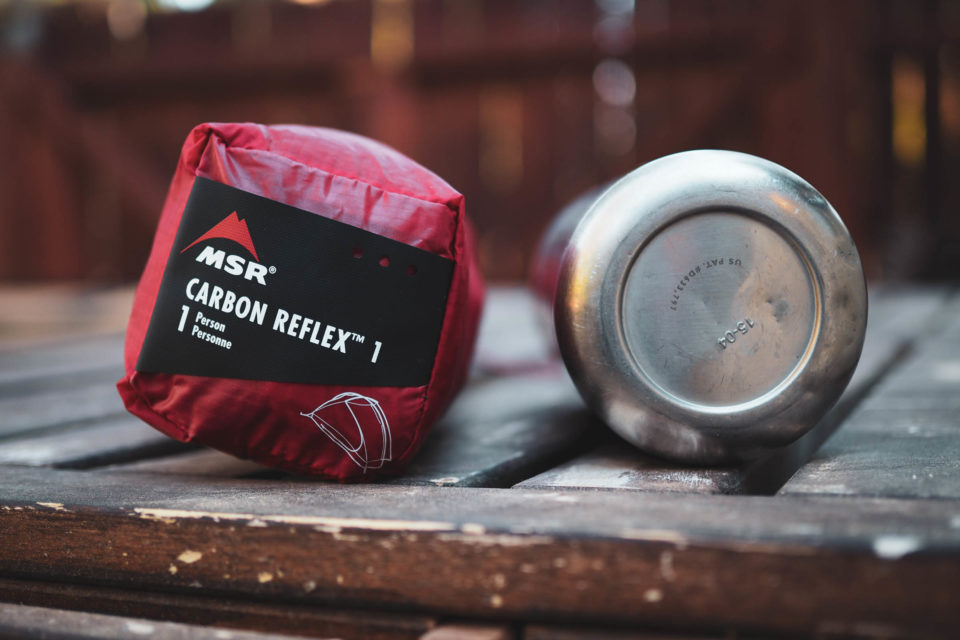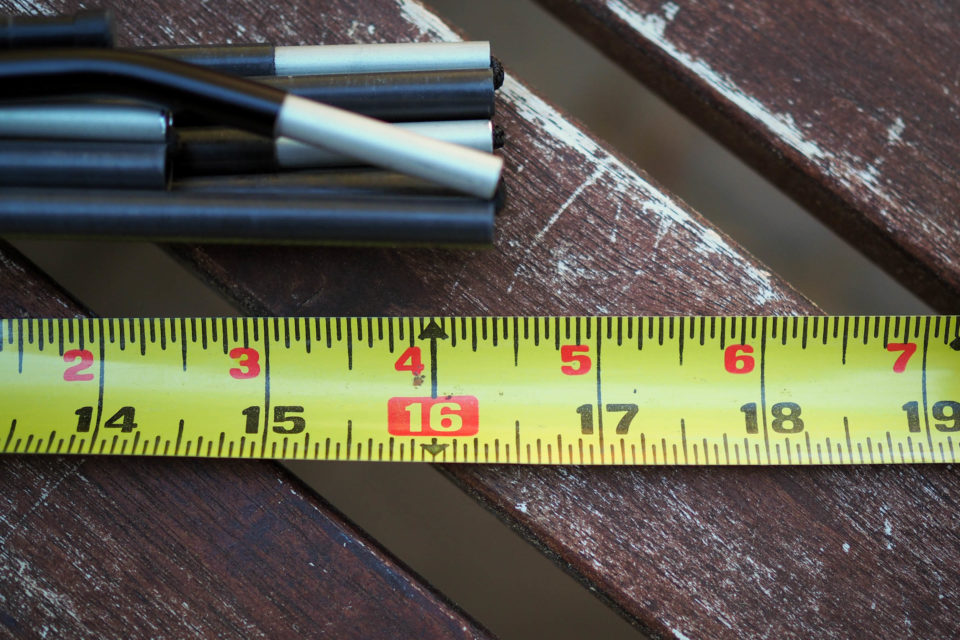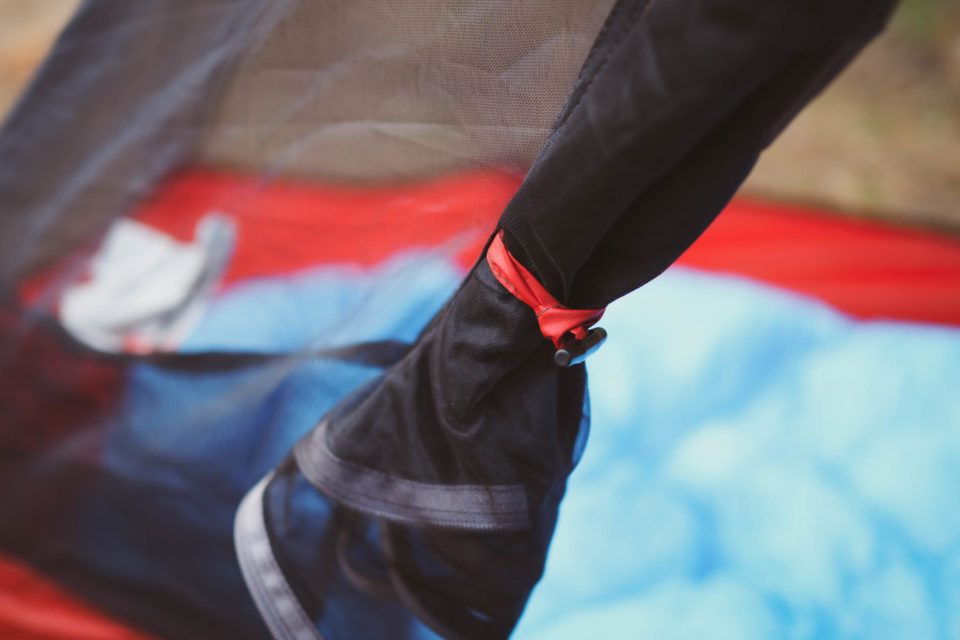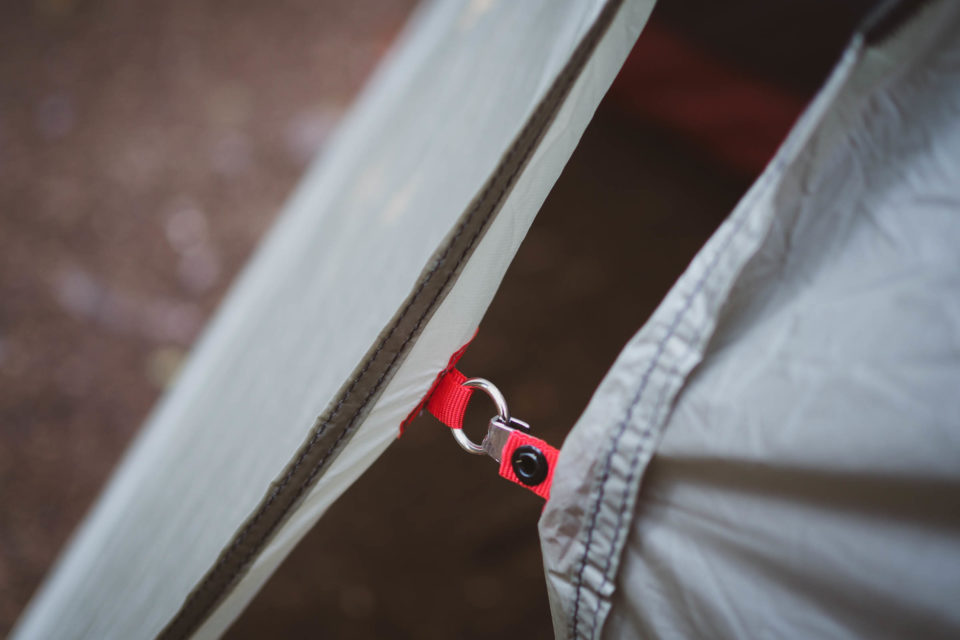MSR Carbon Reflex 1 Review: This Tent Ain’t Heavy
Having an ultralight and packable shelter doesn’t have to mean crawling into the cavelike confines of a bivy or succumbing to the potential exposure of a tarp setup. The MSR Carbon Reflex 1 is one of the lightest, fully featured solo tents available. Read on to find out how its its lightweight materials, carbon poles, and minimal design held up while bikepacking the Oregon Timber Trail…
PUBLISHED Aug 31, 2018
Nerding out over ultralight camping gear could be considered one of my favourite pastimes. There are many different manufacturers coming up with all kinds of unique designs these days. Whether you are heading out solo or with a close friend or partner, there are tons of options for ultralight shelters from boutique, made-in-house companies as well as larger brands, like MSR, boasting decades of experience. Although the brand has deep roots in the climbing industry, MSR has always been a well-trusted and popular option for backcountry camping gear and accessories. There have been some notable products that have stood out over the years, including the popular Whisperlite stove (potentially one of the most bomb-proof liquid-fuel backpacking stoves in the world), the Hubba series of tents that offer a great blend of durability and packability (ultra-popular amongst bike tourers), and most recently the introduction of the MSR Carbon Reflex series of tents that offer featherweight options for one, two, and three people.

Tent, Tarp, or Bivy?
During my initial research into the Oregon Timber Trail, I was quick to discover that more than a few spots are notorious for mosquitoes and other critters that I’d prefer not to share my sleeping quarters with. For me, this meant an ultralight tarp setup wasn’t going to be an option. And with the chance of rain as well, I knew that I’d ultimately end up packing a one-person tent of some kind. But which one? I immediately started checking out the smaller, boutique brands out there making super high quality shelters, most of which were non-freestanding and more than a few that would end up being slightly difficult to acquire since I was living in British Columbia, Canada at the time.
Conversely, MSR products can be found in almost every outdoor gear retailer across Canada and the United States, and although I may have initially glanced over their offerings, I eventually landed on their ultralight (and readily available) MSR Carbon Reflex 1 tent. It checked every box for me: super lightweight, very packable, bug proof, and it comes with a rainfly. In hindsight, my riding partner and I, each in separate one-person tents, never really needed our rainflys. And, there was only one night along the Oregon Timber Trail where bugs forced us to take refuge within our shelters early in the evening. However, given that the weight of the MSR Carbon Reflex 1 tent is comparable to most bivy or tarp shelters out there, I didn’t feel like I was losing much.

I was immediately impressed by the size and weight of the MSR Carbon Reflex 1. Considering the extra packaging and guy lines that are included, it felt just as light as most bivy bags and tarps I’ve played around with. And that impression came before I swapped out the included storage bag for a drybag to pack it even more efficiently. This allowed me to fit the tent (both body and rainfly), my Western Mountaineering Nanolight quilt, Klymit sleeping pad, and air pillow into the drybag on my handlebars. This meant my extra layers could be packed in my saddle bag where they were easily accessible and the weight of my gear was distributed evenly.
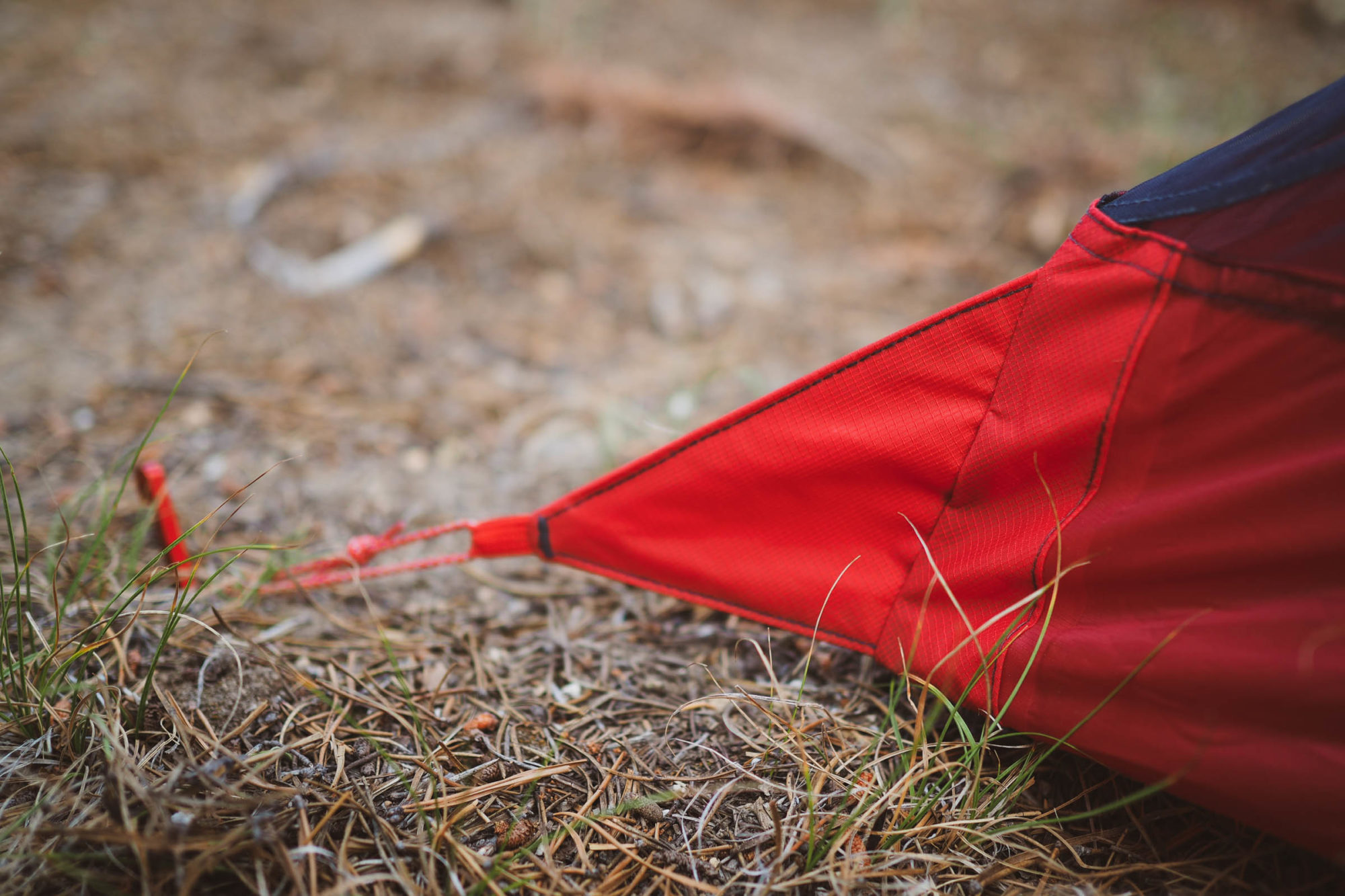
Design Details
Unlike other one-person tents we’ve reviewed, the MSR Carbon Reflex 1’s body is made entirely out of a lightweight 10D polyester micromesh and 15D ripstop Nylon is used for the bathtub style floor. The tent’s mesh upper provides great ventilation and circulation with or without the rainfly, and awesome stargazing opportunities on nights when the fly isn’t required. However, the amount of lightweight mesh used in the Carbon Reflex’s construction means paying special attention to packing and snags is essential to its longevity. I have personally seen many MSR tents built with similar micromesh returned to retailers because of early signs of wear. My opinion is any tent that weighs this little is going to have its flaws, the most obvious being durability. I stayed clear of potential snags and stuffed the body of the tent in a separate nylon sack within my drybag during the Oregon Timber Trail and have yet to notice any signs of wear.
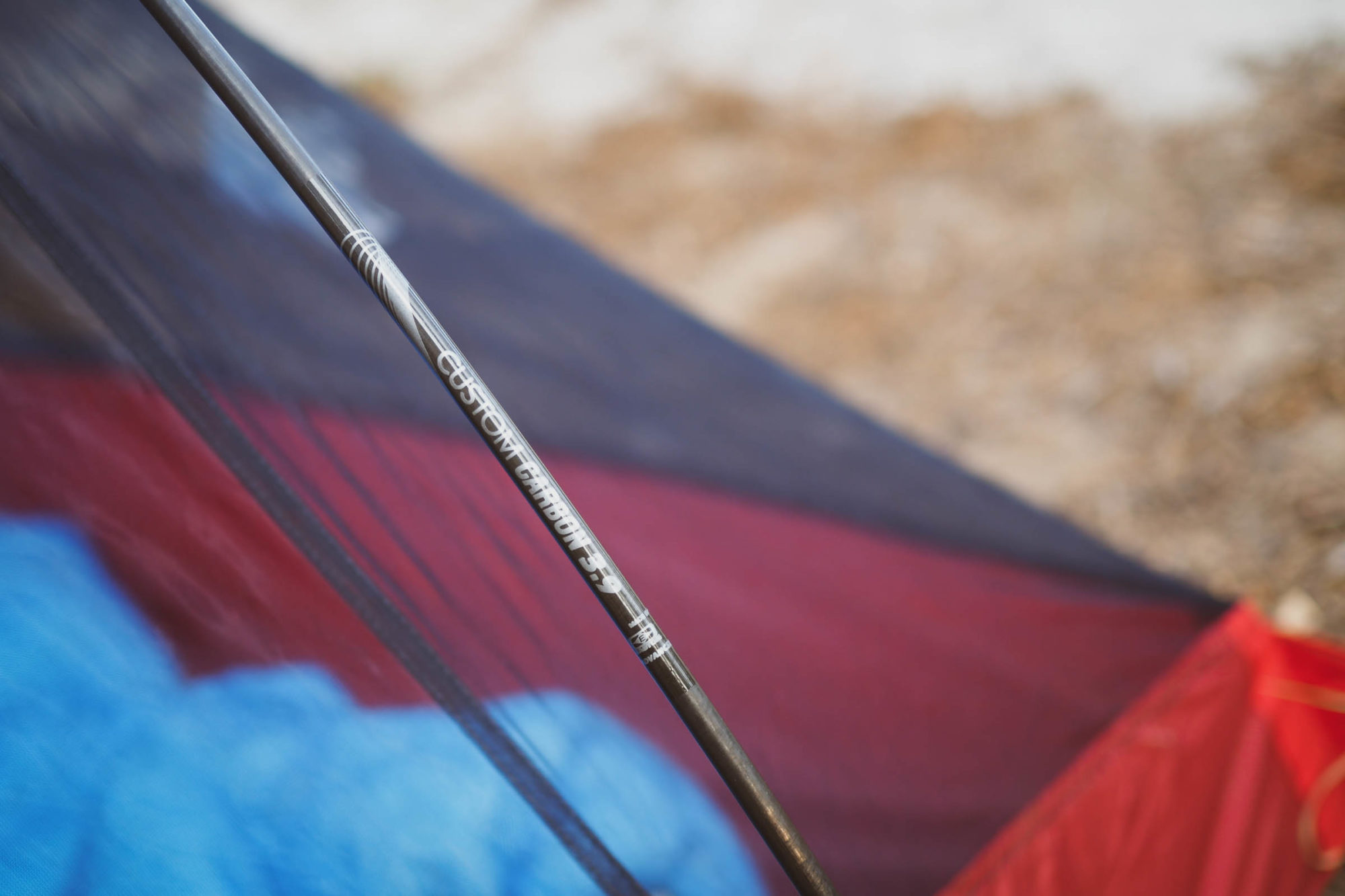
The rainfly itself is made of a 7D ripstop nylon and features multiple guyline locations. Its weight is minimized by using two velcro strips instead of a zipper. A single door and vestibule means the fly is strategically shaped to cut the weight even further on the non-door side, dropping off perpendicular to the ground. Although I had no issues with wind, I’d expect a strong gust to be potentially fatal to the tent if exposed to this side, so taking that into consideration when camping in exposed areas would be advisable.
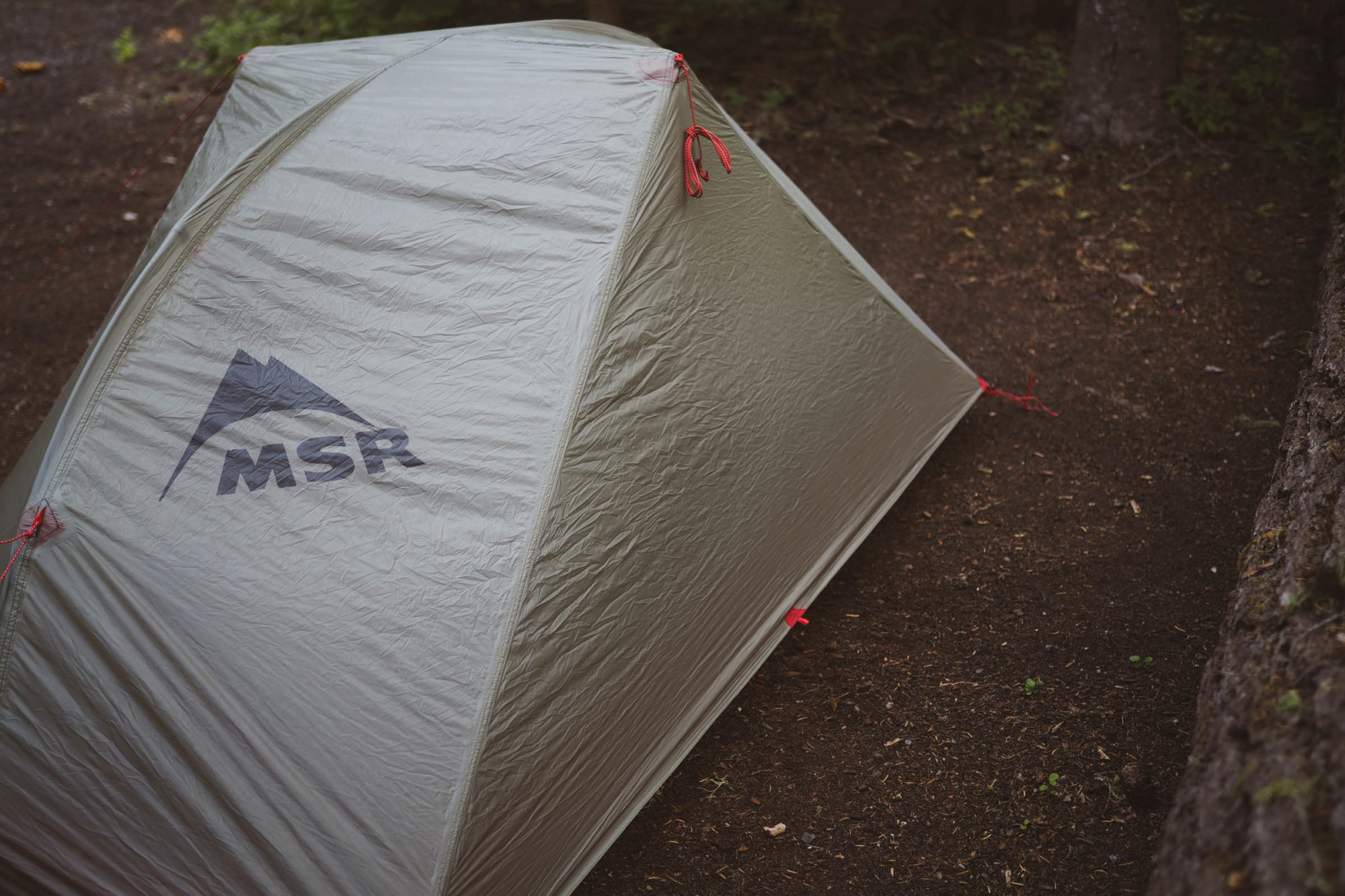
The Easton ION carbon fiber poles help reduce the weight even further and pack down much shorter than most others I’ve used – coming in at 16 3/8″ (41.59cm) – which means packing the poles with the tent on your handlebars or within your frame bag should be possible for even the smallest frame sizes out there. I was admittedly a little hesitant to pack the poles in my frame bag alongside my stove and food, but each night I pulled them out to find everything intact and damage free. I have heard stories of the end-nipples becoming dislodged from the poles themselves, as carbon fiber poles require the nipples to be glued in rather than compressed like traditional aluminum poles. Again, with a bit of patience and due diligence, I’m confident the poles will hold together like the rest of the tent.
Something that stood out for me was the overall design of the tent and all of the little unexpected features that often aren’t included in a lightweight shelter. A large, zippered side door meant getting in and out of the tent at night wasn’t as awkward as I’d imagined it would be, and the velcro rainfly was quick to open and fasten off to the side when it wasn’t needed. However, with the fly installed, the useable door height is limited enough to be slightly annoying to use due to the generous amount of overlap designed to keep the wet away from the inside of the tent, so I’ll only resort to using the rainfly when completely necessary. Stress points are reinforced – mainly where pegs exist along the corners of the tent – with bartacks and often an additional layer of nylon, hopefully keeping early signs of wear at bay. There is also one generously sized internal mesh storage pocket on the same side as the door, providing enough space for a headlamp and toiletries with room to spare.

The inside of the tent is almost entirely symmetrical, meaning there are no intense tapers or slants to cut down on the livable space within the tent. The walls are actually almost flat, and tapered slightly up to a separate pole that runs across the peak of the tent that helps create more headroom when getting changed or searching for lost socks in the base of the tent. Another positive note is the tent’s generous length, which should provide ample room for anyone up to 6’8” or so, something that sets it apart from many of the other lightweight shelters out there. Standing at 6’1” and with an average build, I always felt I had plenty of room at my feet, head, and shoulders – even with my 5L Dakine waistpack living near my head and my riding clothes down by my feet.
Ultralight 1-Person Tents Compared
When compared to other high-end ultralight tents available, it is pretty clear that the MSR Carbon Reflex 1 has raised the bar when it comes to weight, pack size, and floor area. Although I have yet to deploy it in the Fast & Light configuration, which forgoes the body (and bug protection) of the tent and is setup using a separate bathtub style floor and included rain fly, this would save an additional 220g, bringing the total weight down to 570g. Below is a quick comparison chart we’ve put together for reference, arranged from heaviest to lightest.
| Product | Weight | Packed Size | Floor Area (sq meter) | Price |
|---|---|---|---|---|
| Nemo Hornet 1P Tent |
31.7 oz
900 g
|
18 x 4″
48 x 10cm
|
2.0 | $329.95 |
| Tarptent ProTrail (with poles) |
30 oz
878 g
|
16 x 5″
40 x 12 cm
|
2.27 | $246.00 |
| Big Agnes Fly Creek HV 1 Platinum |
29 oz
822
|
18 x 4″
38 x 10
|
1.85 | $499.95 |
| MSR Carbon Reflex 1 |
27.9 oz
790 g
|
17 x 5″
43 x 13 cm
|
1.63 | $399.95 |
| Zpacks Hexamid Solo (floor + pole) |
17.1 oz
485 g
|
12 x 6″
30 x 15 cm
|
TBD | $523.00 |
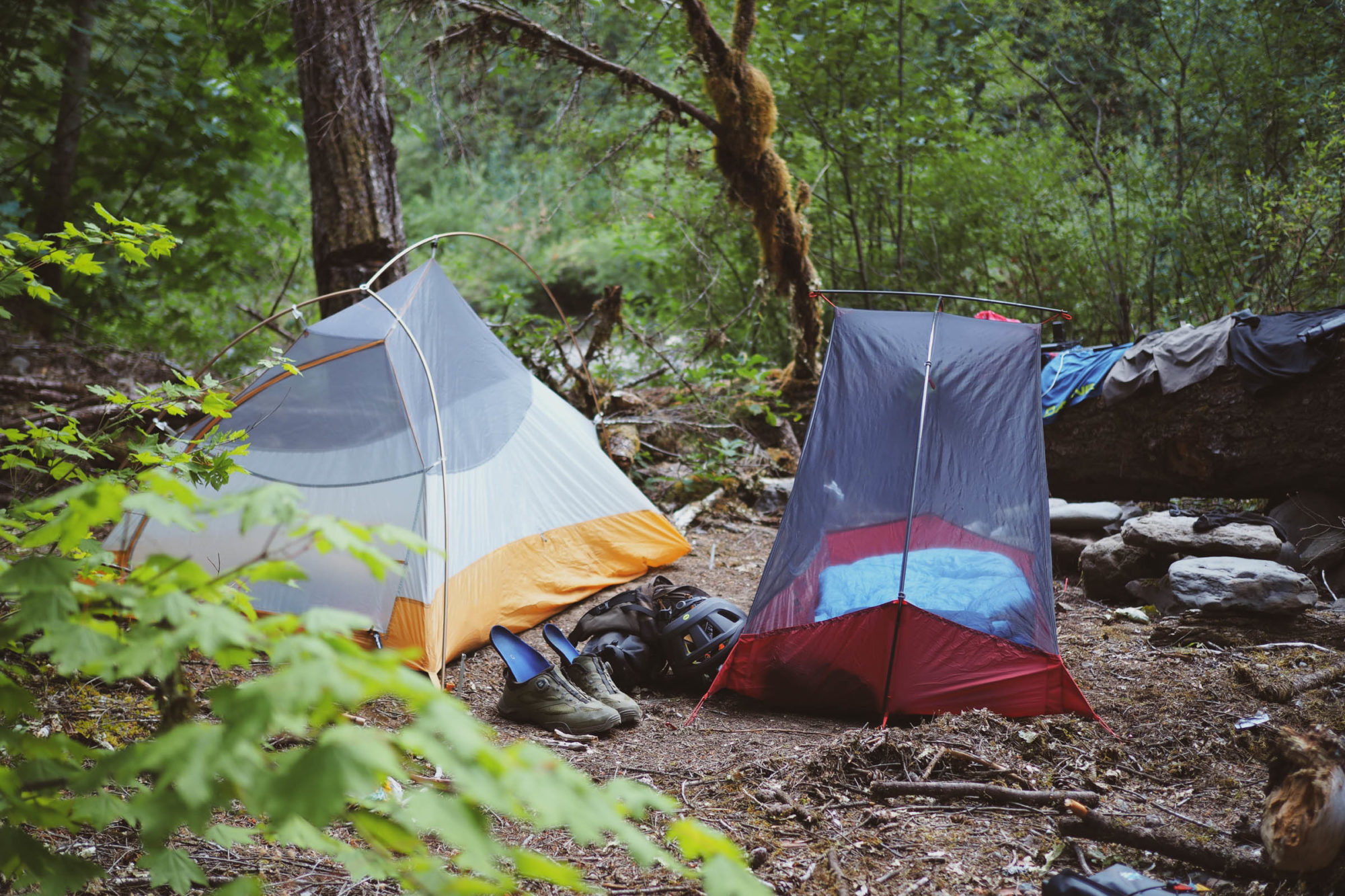
Set Up
MSR’s recommended set up of the tent is quick and straightforward, rarely requiring significant adjustment after it is pitched. Starting with the body of the tent, all four corners are pegged out tight enough to raise the sides of the bathtub floor – a simple visual cue that will almost always ensure a perfect setup. Then the long pole is assembled and popped into the straps found on both ends of the body before attaching the five clips along the length of the tent. Lastly, a short horizontal pole is attached to lift both sides up, creating headroom in the centre of the tent. If the rainfly is required, there are spots for it to clip onto the horizontal pole and it can then be tensioned quickly using the included sliding cord tensioners. The entire process only takes a few minutes, is easily accomplished alone, and requires no fussing about like other non-freestanding tents I have used in the past. Things can get awkward when the ground is to hard for the pegs to penetrate properly, but getting creative with rocks, logs, and bikes is a great way to get around that.
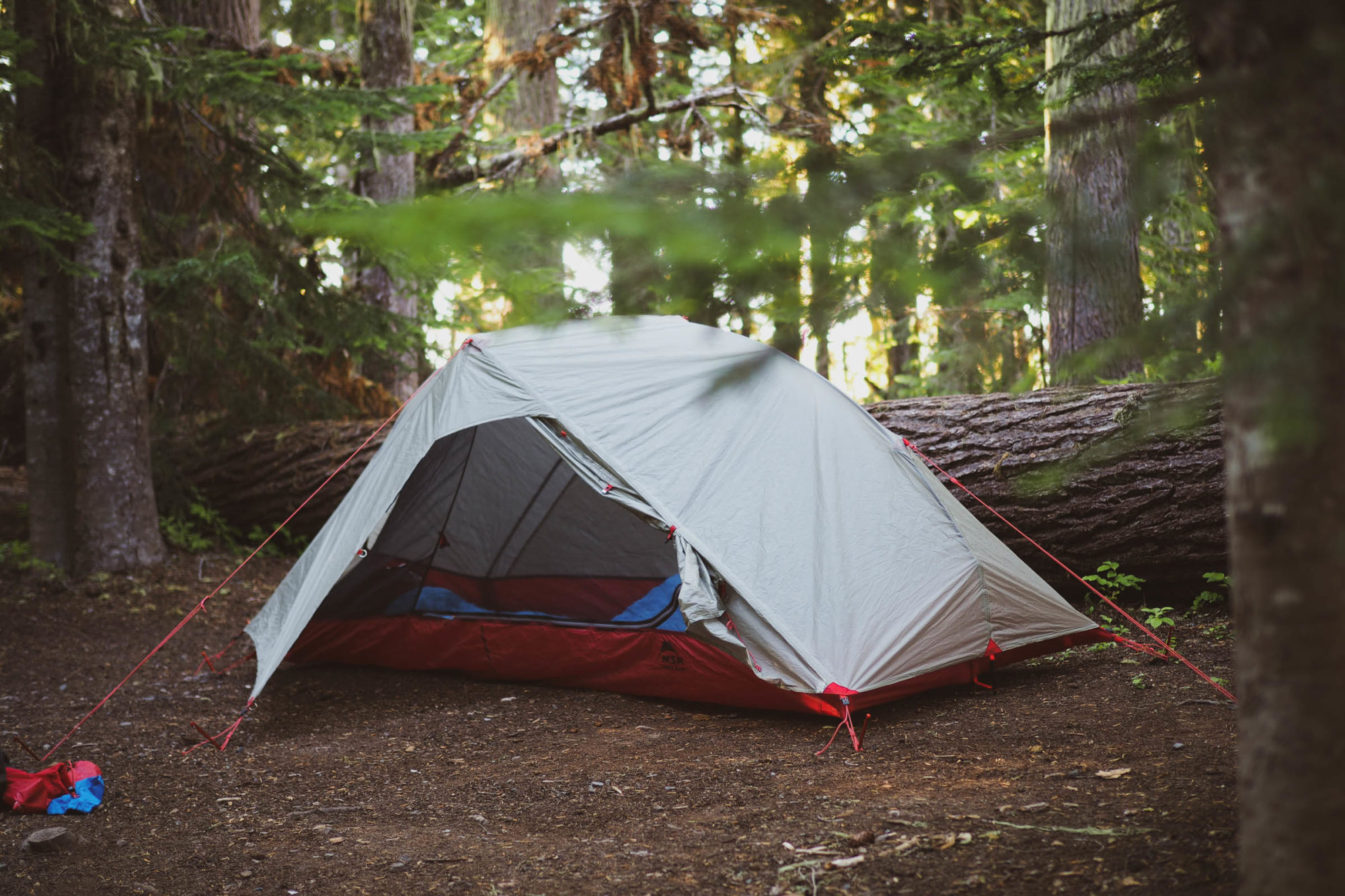
Pros
- One of the lightest fully featured, one-person tents available.
- Quick set up and guyline tensioning mean less time spent setting up camp and more time spent eating snacks.
- Plenty of mesh in the body of the tent helps keep the inside well ventilated and condensation free.
- Simple yet durable pegs are lightweight and seem to hold in a wide variety of ground surfaces.
Cons
- Potential for early signs of wear if proper precautions aren’t taken.
- Side door is partially obstructed when using rainfly, making entering and exiting the tent slightly more awkward than normal.
- Near vertical non-door side has obvious potential to catch strong winds. Pay close attention to the orientation in unfavourable weather.
- Weight 790g (1 lbs 13 oz)
- Packed Size 43 x 13 cm (17 x 5 in)
- Floor Area 1.63 sq. m (17 sq. ft)
- Price $399.95
- Place of Manufacture China
- Manufacturer’s Details MSR
- Buy at REI
Wrap Up
If you haven’t gathered by now, I’m totally into lightweight tents. I think I’d consider something completely bare bones with minimal set up time if I ever seriously enter a bikepacking race, but for general use I’m most comfortable lying down to bed at night within a tent of some kind. I was pretty satisfied with the size, packability, and space offered by Nemo’s Hornet Elite 2P tent, but knowing there was an option to go lighter without losing out on many other features besides living space, how could I say no, especially on an arduous route like the Oregon Timber Trail? The MSR Carbon Reflex 1 tent is damn light, ultra packable, and I could spread out comfortably without hitting any of the walls.
Stability in high winds and long term durability are the only unanswered questions, and although it survived the Oregon Timber Trail with no physical signs of wear or tear, I will have to update this review after a few more long rides this summer. Stay tuned! And, as always, if you’ve had any experience with the Carbon Reflex series, please leave a comment and feedback below…
Please keep the conversation civil, constructive, and inclusive, or your comment will be removed.







